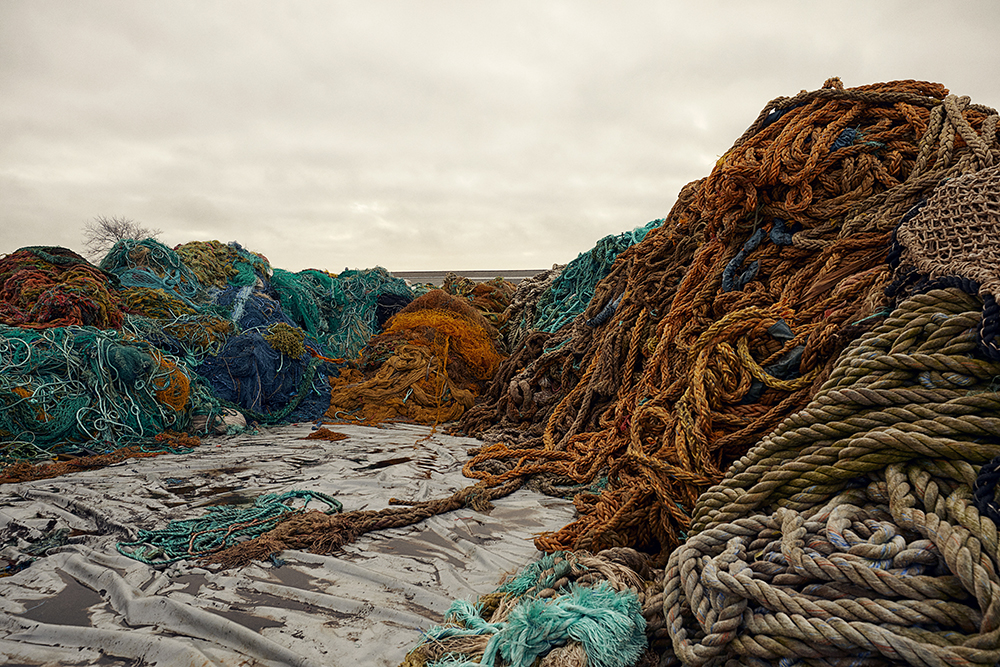
In contrast to common perceptions, plastic is in no way near one material. Rather, it is a combination of many materials (polymers) with different chemical compounds and additives such as pigments or fibres, depending on its use. It is very difficult to tell the difference between different types of plastics, and this is what makes it difficult to separate and recycle them.
In collaboration with Vestforbrænding, Dansk Affaldsminimering Aps, and PLASTIX, researchers from the Department of Biological and Chemical Engineering at Aarhus University have now developed a new camera technology that can see the difference between 12 different types of plastics (PE, PP, PET, PS, PVC, PVDF, POM, PEEK, ABS, PMMA, PC, and PA12). Together, these constitute the vast majority of household plastic types.
The technology makes it possible to separate plastics based on a purer chemical composition than is possible today, and this opens up for completely new opportunities to recycle plastics. The technology has been tested at pilot scale and is planned to be implemented at PLASTIX and Dansk Affaldsminimering Aps in 2022.
“With this technology, we can now see the difference between all types of consumer plastics and several high-performance plastics. We can even see the difference between plastics that consist of the same chemical building blocks, but which are structured slightly differently. We use a hyperspectral camera in the infrared area, and machine learning to analyse and categorise the type of plastic directly on the conveyor belt. The plastic can then be separated into different types. It’s a breakthrough that will have a huge impact on all plastics separation,” says Associate Professor Mogens Hinge, who is heading the project at Aarhus University.
The study has been published in the scientific journal Vibrational Spectroscopy.
Plastics are currently separated using near-infrared technology (NIR) or via density tests (floats/sinks in water).
These methods can separate certain plastic fractions (for example PE, PP, and PET), but not with the same accuracy as the new technology, and therefore not with the chemical purity in the composition, and this is vital to be able to increase the recycling rate of waste plastic.
“The technology we’ve developed in collaboration with the university is nothing short of a breakthrough for our ability to recycle plastics. We look forward to installing the technology in our processing hall and starting in earnest on the long journey towards 100% utilisation of waste plastic,” says Hans Axel Kristensen, CEO of PLASTIX.
Plastic must be at least 96% pure by polymer type to be recycled in conventional industry. This means that the plastic has to be separated to an almost pure product in terms of chemical composition.
Using the new technology, we are now a big step along the way, says Associate Professor Mogens Hinge, who stresses that the technology is continuously being developed and that data indicates it may be possible to differentiate even further between polymer types and additives before long.
The hyper-spectral camera technology has been developed in cross-disciplinary collaboration, including BSc and MSc engineering students and researchers at the Department of Biological and Chemical Engineering at Aarhus University, as well as experts from the participating companies.
The research is part of the Re-Plast project, which is being funded by the Innovation Fund Denmark with DKK 22.7 million. The project is being headed by the Department of Biological and Chemical Engineering at Aarhus University. Other participants are the Department of Electrical and Computer Engineering at Aarhus University, Vestforbrænding, Dansk Affaldsminimering and PLASTIX.
Mogens Hinge
Associate Professor
Department of Biological and Chemical Engineering
- Process and Materials Engineering

Hans Axel Kristensen
CEO
PLASTIX A/S
Tel.: 2326 5090

It is not often that something shakes to the core the world’s probably oldest industry, the building industry, but 3D printing could do just that. The technology is advancing in leaps and bounds, and many interesting projects are already being realised all over the world.
Denmark’s first 3D-printed house was built in Holstebro in 2021-22. Two newly qualified graduates from Aarhus University, Mikkel Brich and Hasan Alsofi, were behind the achievement, and they founded the company 3DCP.
“They’re passionate in the true sense of the word, and that’s exactly what we need. Because experimental buildings like this can really take us forward as an industry - and people like this can take the lead, show the way ahead and demonstrate that it is actually possible for a new technology to have a major impact on how we build,” says Kasper Lynge, deputy head of department at the Department of Civil and Architectural Engineering at Aarhus University.
3D printing is a major part of an ever-expanding digitalisation and automation of the construction sector. And there’s no getting away from the benefits: faster construction, lower costs, opportunities to build more complex structures, more focus on function and less waste generation.
But we must remember that the technology is still in its infancy. As a result, according to Kasper Lynge, there are many construction-technical aspects to be improved in the 3D printing technology, so that it can be integrated and optimised in relation to current rules and standards for indoor climate, energy consumption and air leakage.
And because of this, it is also quite alright today for structures to be 3D-printed in high-strength concrete, for example.
“Right now, we need to get to know the technology. It has to be developed and streamlined before we can develop the materials we print with. That’s why it’s important that universities get involved in these projects to help test, measure, weigh and document and target our research and development to optimise this technology, which is so important for future construction,” he says.
He continues:
“I hope that we can get more collaboration across disciplines and the sector. Let’s meet where construction is actually taking place. I’m sure we can help each other much more, and experimental buildings like the one 3DCP is working on are an excellent mouthpiece for fusing together regulations, standards, innovation and research.”